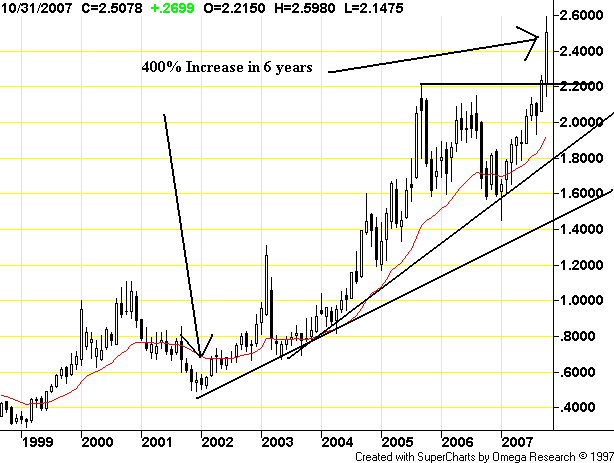Looking forward, however, the Committee did not see the recent growth performance as likely to be sustained in the near term. Financial conditions had improved somewhat after the September FOMC action, but the market for nonconforming mortgages remained significantly impaired, and survey information suggested that banks had tightened terms and standards for a range of credit products over recent months. In part because of the reduced availability of mortgage credit, the contraction in housing-related activity seemed likely to intensify. Indicators of overall consumer sentiment suggested that household spending would grow more slowly, a reading consistent with the expected effects of higher energy prices, tighter credit, and continuing weakness in housing. Most businesses appeared to enjoy relatively good access to credit, but heightened uncertainty about economic prospects could lead business spending to decelerate as well. Overall, the Committee expected that the growth of economic activity would slow noticeably in the fourth quarter from its third-quarter rate. Growth was seen as remaining sluggish during the first part of next year, then strengthening as the effects of tighter credit and the housing correction began to wane.
Put all of this in the "duh!!!" column.
The Committee also saw downside risks to this projection: One such risk was that financial market conditions would fail to improve or even worsen, causing credit conditions to become even more restrictive than expected. Another risk was that, in light of the problems in mortgage markets and the large inventories of unsold homes, house prices might weaken more than expected, which could further reduce consumers' willingness to spend and increase investors' concerns about mortgage credit.
Y'think, Ben? Existing home inventories are near their historical high by a wide margin, home vacancies are high, credit is tightening and the US consumer is already coping with an incredibly high debt load. All of those factors just might lead to further home price deterioration.
The Committee projected overall and core inflation to be in a range consistent with price stability next year. Supporting this view were modest improvements in core inflation over the course of the year, inflation expectations that appeared reasonably well anchored, and futures quotes suggesting that investors saw food and energy prices coming off their recent peaks next year. But the inflation outlook was also seen as subject to important upside risks. In particular, prices of crude oil and other commodities had increased sharply in recent weeks, and the foreign exchange value of the dollar had weakened. These factors were likely to increase overall inflation in the short run and, should inflation expectations become unmoored, had the potential to boost inflation in the longer run as well.
In case you were wondering, none of the following charts are important in any way shape or form, and they do not -- repeat DO NOT -- show any energy or agricultural price inflation in any way, shape or form. In fact -- just ignore the following chart, because the Federal Reserve does.
Corn

Wheat
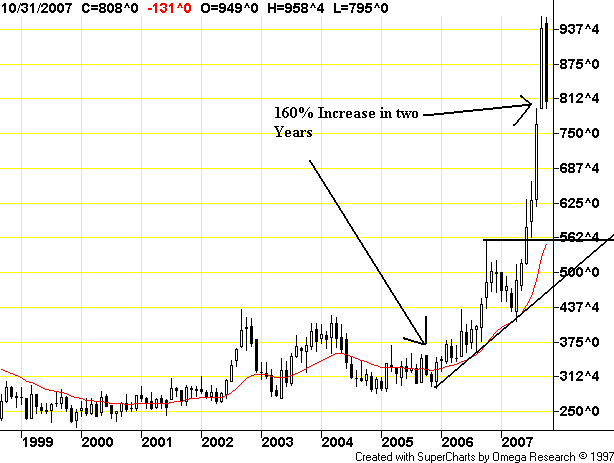
Oats
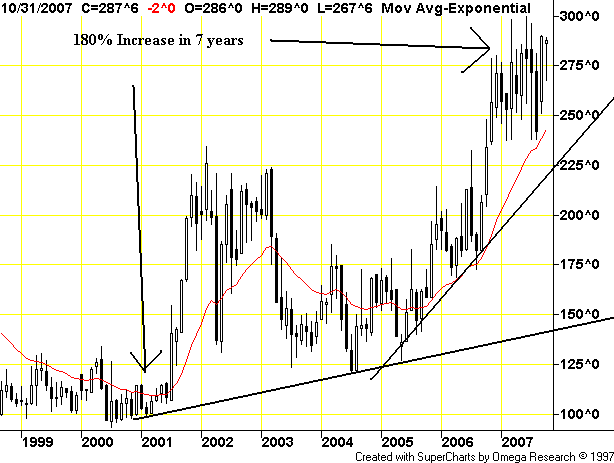
Oil
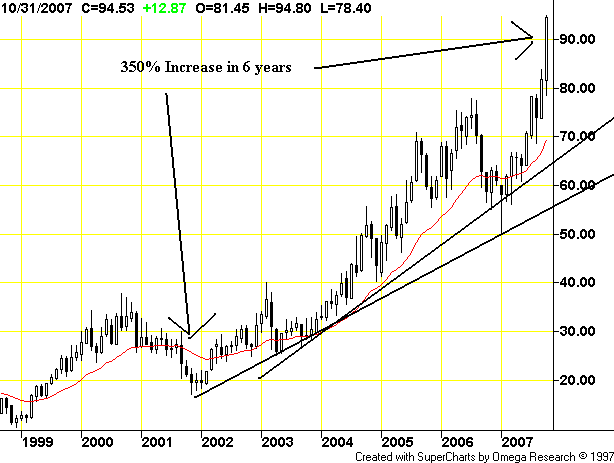
Propane
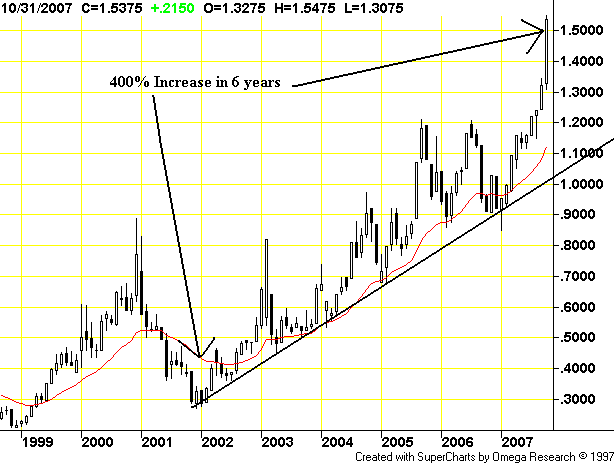
Heating Oil
